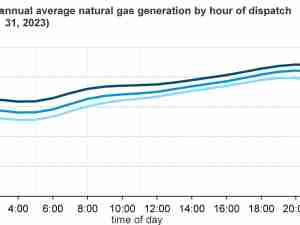In the industrial hub of Wuxi near Shanghai, car owners recently took part in China’s largest experiment to rewire the grid and take advantage of its world-leading fleet of electric vehicles.
Instead of charging up after plugging in, 50 EVs did it the other way around. For 30 minutes, the cars combined to feed around 2 megawatts of electricity into the grid, enough to fully power 133 houses for a day, according to a report from state-owned CCTV.
China plans to lean further into vehicle-to-grid tech. The government’s top economic planning agency, the National Development and Reform Commission, said last week it will select 50 projects in places like Shanghai, Beijing, Guangdong and Sichuan to carry out demonstrations by 2025. By 2030, it wants the technology and market mechanisms that would allow widespread adoption standardized across the country.
Vehicle-to-grid projects envision cars as energy storage systems on wheels, able to charge up when power is plentiful and feed electricity back into the system when demand surges. By 2040, EVs in China could have enough capacity to supply all of the country’s peak demand needs if they were V2G-capable, according to BloombergNEF.
That’s the long-term vision. In the short term, planners would be happy if they could just get EVs to avoid charging during peak hours. Plugging in at the busiest times strains a grid that’s proven fragile in recent years, as well as requiring more fossil fuels to be burned to meet consumption. The NDRC wants at least 60% of all EV charging in the demonstration cities to be done at times of low demand by 2025.
Crucial to vehicle-grid integration will be mechanisms that let cars and drivers know when there’s excess power and when supplies are tight. While some places like California and Australia have dynamic power pricing that can change by the minute, most parts of China have a price that’s fixed for a whole day, especially for residential customers.








